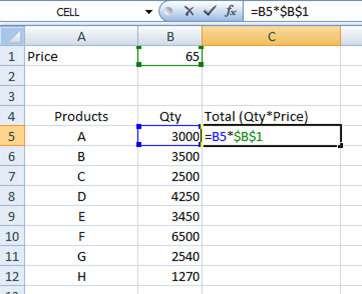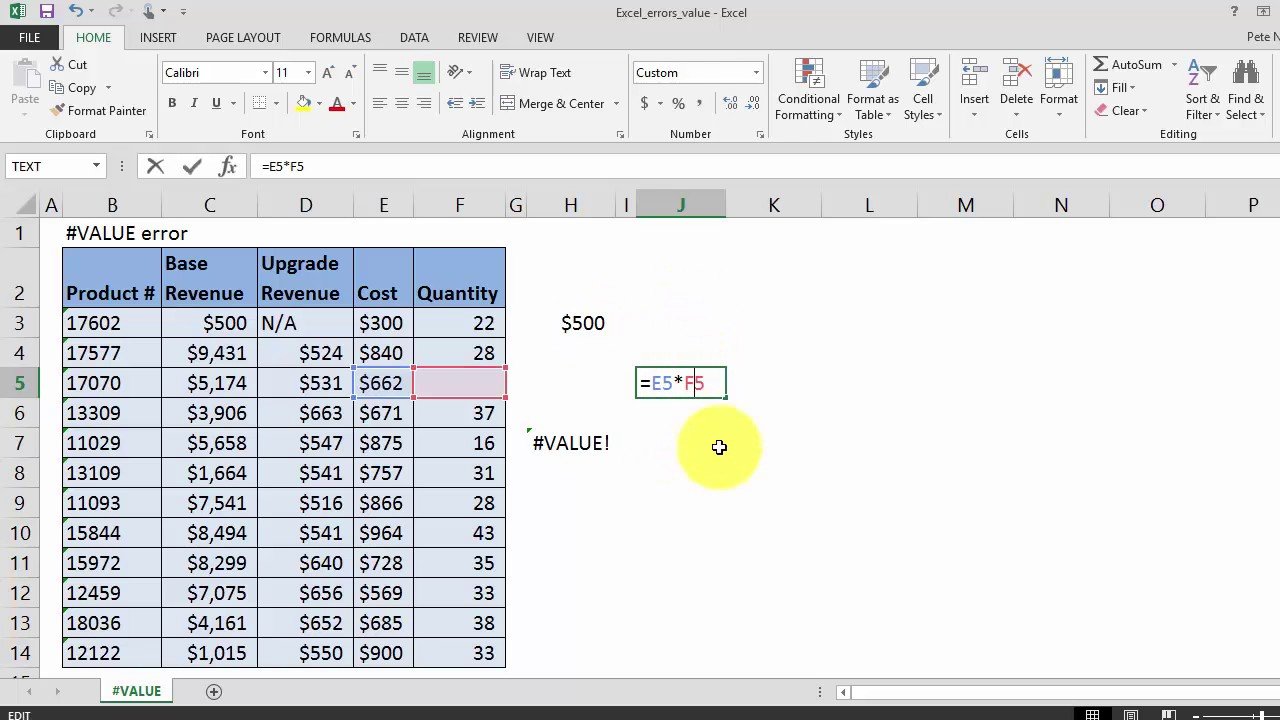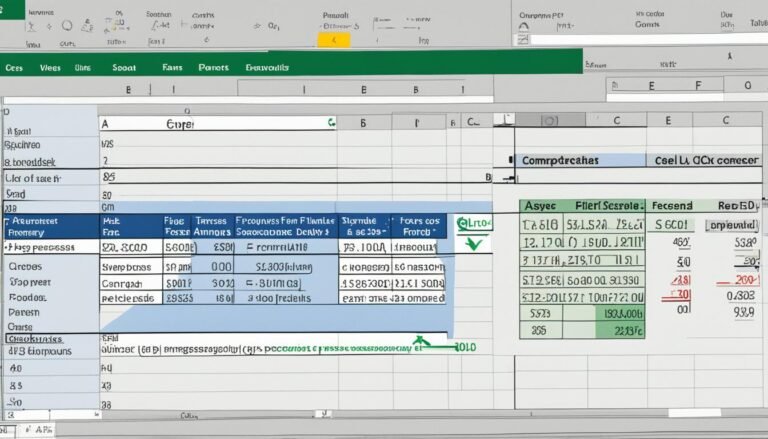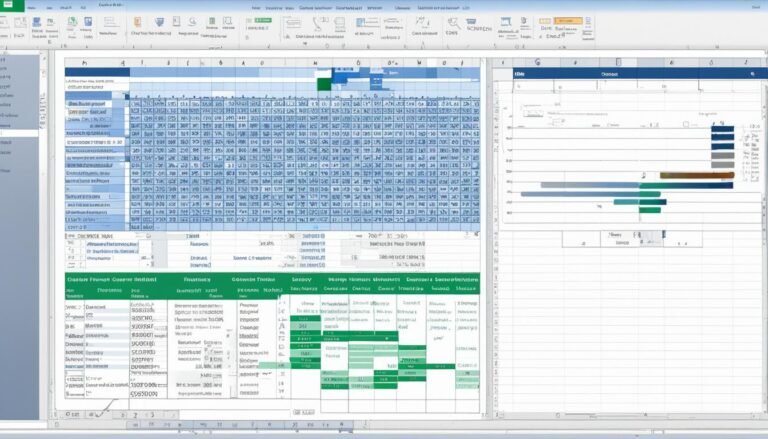How to Fix #Value in Excel Formula: Quick Solutions!
To fix the #VALUE! Error in Excel, check for incorrect data types or misplaced commas and parentheses.
Ensure all cell references and functions are correct. Excel users often encounter the #VALUE! Error, which can be frustrating. This error typically arises due to incorrect data types or improperly placed commas and parentheses in formulas. Identifying and resolving the root cause is crucial for accurate calculations.
Incorrect cell references and mismatched functions can also trigger this error. Understanding common pitfalls and learning effective troubleshooting techniques can significantly improve your Excel skills. Mastering these will enhance your productivity and ensure your spreadsheets are error-free. This guide provides practical steps to fix the #VALUE! Error, making your Excel experience smoother and more efficient.
Introduction To #value! Error In Excel
Excel is a powerful tool for managing data. Yet, it can produce errors. One common error is the #VALUE! error. This error occurs when Excel cannot process your formula. Understanding this error helps improve your Excel skills.
Common Causes Of #value! Error
There are several reasons why the #VALUE! error appears. Here are the most common causes:
- Text in Formula: Excel cannot process text in a number formula.
- Incorrect Range: The range specified may be wrong.
- Spaces: Extra spaces in your data can cause this error.
- Missing Data: Sometimes, data is missing or incomplete.
Impact On Data Analysis
The #VALUE! error can affect your data analysis in many ways:
- Skewed Results: The error can lead to incorrect calculations.
- Time-Consuming: Fixing errors can take up valuable time.
- Confusion: It can make your data hard to understand.
Identifying and fixing the #VALUE! error quickly is crucial. It ensures accurate and reliable data analysis.
Checking For Data Type Mismatches
One common reason for the #VALUE error in Excel is data type mismatches. Excel formulas require compatible data types to function correctly. Incorrect data types can lead to errors in your calculations. This section will help you identify and correct these mismatches.
Identifying Data Type Issues
First, you need to identify if a data type mismatch is causing the #VALUE error.
- Check cells involved in the formula.
- Ensure numbers are formatted as numbers.
- Ensure text is formatted as text.
- Look for special characters or spaces in cells.
Sometimes, Excel treats numbers as text. This can happen if the data is imported from another source. To check the data type:
- Select the cell with the formula.
- Click on the Formulas tab.
- Use the Evaluate Formula button.
Correcting Data Types
Once you identify the data type issue, you can correct it.
Here are steps to change text to numbers:
- Select the cell with the text.
- Click on the Home tab.
- Find the Number group.
- Choose General or Number format.
To convert numbers to text:
- Select the cell with the number.
- Click on the Home tab.
- Go to the Number group.
- Choose Text format.
Another way to correct data types is using functions:
- VALUE function: Converts text to a number.
- TEXT function: Converts numbers to text.
Here is how to use the VALUE function:
=VALUE(A1)
And here is how to use the TEXT function:
=TEXT(A1, "0")
By ensuring correct data types, you can resolve the #VALUE error in Excel formulas.
Correcting Text And Number Conflicts
Excel formulas often run into issues, especially with text and number conflicts. One common error is the #VALUE! error. This error happens when a formula expects a number but finds text instead.
Spotting Text In Number Formulas
Finding text in number formulas is important. You can quickly check your cells for text.
- Select the cells with the formula.
- Go to the Home tab.
- Click on Find & Select.
- Choose Go To Special.
- Select Constants and uncheck everything except Text.
Excel will highlight the cells with text. This makes it easier to identify and fix the issue.
Converting Text To Numbers
Once you find text in your number formulas, convert them to numbers. Here are a few methods:
- Using the VALUE Function:
=VALUE(A1)This formula converts the text in cell A1 to a number.
- Using Paste Special:
- Copy an empty cell.
- Select the cells with text.
- Right-click and choose Paste Special.
- Select Add and click OK.
This method forces Excel to treat the text as numbers.
- Using Text to Columns:
- Select the cells with text.
- Go to the Data tab.
- Click on Text to Columns.
- Choose Delimited and click Next.
- Click Finish.
This splits the text into columns and converts them to numbers.
These methods help you fix the #VALUE! error in Excel by converting text to numbers.

Credit: www.edupristine.com
Handling Empty Cells In Formulas
Handling empty cells in Excel formulas can be tricky. Empty cells often lead to the #VALUE error, disrupting your calculations. Here, we will explore how to detect and manage empty cells in your formulas.
Detecting Empty Cells
Empty cells can cause issues in your formulas. To identify them, use the ISBLANK function. This function checks if a cell is empty. For example:
=ISBLANK(A1)
This formula returns TRUE if cell A1 is empty. Otherwise, it returns FALSE.
Strategies To Manage Blank Cells
Once you detect empty cells, you need strategies to handle them. Here are some effective methods:
- Use IF Function: The IF function lets you handle empty cells gracefully. For example:
=IF(ISBLANK(A1), "Empty", A1)
This checks if A1 is empty. If true, it returns “Empty”; otherwise, it returns the value of A1.
- Replace Empty Cells: You can use the IFERROR function to replace errors caused by empty cells. For instance:
=IFERROR(A1/B1, "Error")
This replaces any error, including those from empty cells, with “Error”.
- Sum Functions: For summing values, use SUMIF or SUMIFS to ignore empty cells. For example:
=SUMIF(A1:A10, "<>")
This sums only non-empty cells within the range A1:A10.
| Function | Description | Example |
|---|---|---|
| ISBLANK | Checks if a cell is empty | =ISBLANK(A1) |
| IF | Handles empty cells with custom values | =IF(ISBLANK(A1), "Empty", A1) |
| IFERROR | Replaces errors from empty cells | =IFERROR(A1/B1, "Error") |
| SUMIF | Sums non-empty cells | =SUMIF(A1:A10, "<>") |
Handling empty cells can be simple with these methods. Use these strategies to ensure your formulas work smoothly.
Using Iferror And Iserror Functions
Encountering the #VALUE error in Excel formulas can be frustrating. The IFERROR and ISERROR functions offer simple solutions. These functions help manage and identify errors, making your data cleaner and more reliable. This section explains how to use these functions effectively.
Implementing Iferror For Cleaner Output
The IFERROR function helps display a custom message when an error occurs. This makes your spreadsheet more readable.
To use IFERROR, wrap your existing formula inside it:
=IFERROR(your_formula, "Custom Error Message")This formula will show your custom message if an error occurs. Otherwise, it will display the original result.
For example, instead of seeing #VALUE, you could show “Check Input”. This helps users understand what went wrong.
Utilizing Iserror To Identify Errors
The ISERROR function helps detect errors in your formulas. This function returns TRUE if there is an error and FALSE if there isn’t.
Here’s how to use ISERROR:
=ISERROR(your_formula)You can combine ISERROR with an IF statement to take specific actions:
=IF(ISERROR(your_formula), "Custom Error Message", your_formula)This formula will check for an error and display your custom message if one is found. If no error is found, it will display the original result.
Using ISERROR helps pinpoint where issues occur in your data.

Credit: exceljet.net
Array Formula Issues
Array Formula Issues can often cause the #Value error in Excel. Recognizing and resolving these errors is crucial for smooth data analysis. Array formulas are powerful, but they can be tricky to debug. Understanding the common problems and their solutions will help you fix these errors efficiently.
Recognizing Array Formula Problems
Array formulas can return a #Value error due to various reasons. These formulas often involve multiple ranges and complex calculations. Here are some signs of array formula problems:
- Array ranges are not the same size.
- Input data contains text instead of numbers.
- Formulas are not entered correctly.
Recognizing these signs can help you identify the root cause of the error. Always check your data and formula structure.
Resolving Array Formula Errors
Fixing array formula errors involves a few key steps. Follow these guidelines to troubleshoot:
- Check range sizes: Ensure all ranges in your array formula are of equal size.
- Verify data types: Make sure all input data are numbers.
- Correct formula entry: Use Ctrl+Shift+Enter to enter your array formula.
Here is a simple example:
=SUM(A1:A3B1:B3)
Ensure that both ranges (A1:A3 and B1:B3) are the same size. Enter the formula using Ctrl+Shift+Enter. If done correctly, Excel will wrap the formula in curly braces like this:
{=SUM(A1:A3B1:B3)}
These steps will help you resolve most #Value errors caused by array formulas.
Advanced Troubleshooting Techniques
Fixing the #VALUE error in Excel can be tricky. Advanced troubleshooting techniques help identify and fix errors. These methods are efficient and save time.
Employing Excel’s Error Checking Tool
Excel’s Error Checking Tool is powerful. It identifies and explains errors. To use this tool:
- Click on the cell with the #VALUE error.
- Go to the Formulas tab in the Ribbon.
- Click on Error Checking in the Formula Auditing group.
- Select Show Calculation Steps for detailed error information.
The tool suggests fixes. Follow the recommendations to resolve the error.
Exploring Formula Auditing Features
Excel’s Formula Auditing features help trace and fix errors. These features include:
- Trace Precedents: Shows cells that feed into the formula.
- Trace Dependents: Shows cells that depend on the formula.
- Evaluate Formula: Breaks down the formula step-by-step.
To access these features, go to the Formulas tab. Use the Formula Auditing group to find these tools. They help understand the formula structure and locate errors.
| Feature | Description |
|---|---|
| Trace Precedents | Shows cells that feed data into the formula. |
| Trace Dependents | Shows cells that rely on the formula. |
| Evaluate Formula | Breaks down the formula step-by-step. |
Using these features helps fix complex #VALUE errors. Understanding the formula structure is crucial for error resolution.

Credit: www.ablebits.com
Preventive Measures And Best Practices
Encountering the #Value error in Excel can be frustrating. This error often disrupts workflow and data analysis. Following preventive measures and best practices can minimize these errors.
Designing Error-resistant Formulas
Creating error-resistant formulas is crucial for smooth data operations. Here are some key practices:
- Use Built-In Functions: Excel offers many built-in functions to handle different data types.
- Consistent Data Types: Ensure all data in a range is of the same type.
- Validate Inputs: Before applying formulas, validate your data.
- Test Formulas: Test your formulas with different data sets to ensure they work correctly.
Continuous Learning And Upgrading Skills
Staying updated with the latest Excel features and functions is essential. Continuous learning helps you utilize Excel more effectively.
- Online Courses: Enroll in online courses that cover advanced Excel techniques.
- Webinars: Attend webinars hosted by Excel experts.
- Practice: Regular practice helps in mastering new skills.
- Community Forums: Participate in community forums to learn from others.
| Resource | Benefit |
|---|---|
| Online Courses | Structured learning with expert guidance |
| Webinars | Live interaction with instructors |
| Community Forums | Peer support and diverse solutions |
| Practice | Hands-on experience |
How to Fix #Value in Excel Formula: FAQs
How To Remove #value Error In Excel But Keep Formula?
Use the IFERROR function to replace the #VALUE error. Example: =IFERROR(your_formula, “alternative_value”). This keeps the formula intact.
How To Hide #value Error In Excel?
Use the IFERROR function to hide the #VALUE! Error. Example: =IFERROR(A1/B1, “”). This will display a blank cell instead of the error.
How Do You Remove #value From A Cell?
To remove #VALUE! From a cell in Excel, check for incompatible data types. Ensure all formulas reference valid numbers or text.
How Do I Sum But Ignore #value In Excel?
Use the formula `=SUMIF(range, “<>#VALUE! “)` to sum numbers while ignoring #VALUE! Errors in Excel.
How To Identify Value Error?
Identify #VALUE error by looking for the #VALUE! Text in a cell.
Conclusion
Fixing the #Value error in Excel is straightforward with the right approach. Follow the steps outlined to resolve this issue efficiently. Mastering these techniques improves your Excel skills and boosts productivity. Keep practicing, and you’ll handle Excel errors like a pro.
Happy Excel-ing!



